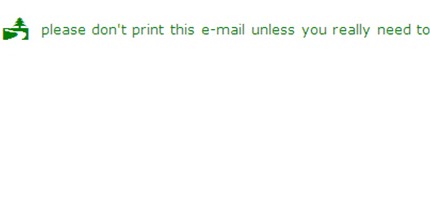Debbie Meyers had so much fun last week, she's back at it again! Enjoy-
By nature, DR practitioners tend to have behind-the-scenes personalities. We don’t share the limelight, we create it. We are other-focused, making sure donors feel good, not worrying about ourselves. And that’s fine, because that’s what we’re paid to do.
But beware of these cold hard truths:
1. If people don’t know what you do, they assume you do nothing.
2. Perception is everything.
Our colleagues may see us handle donor correspondence, create name tags and arrange meetings for donors, and view us administrative assistants. If they see us managing events, they may assume can cater. Or worse yet, they never see what we do, or, if they do see what we do, they fail to attribute it to our efforts.
When you think about it, anything relating to donors is considered donor relations. So where do you – or more importantly, your boss – draw the line? If ever a career existed that’s a magnet for the catch-all “other duties as assigned” bullet in its job description, it’s ours.
Moreover, because our work says “thank you” instead of “please” – i.e., we step in after a gift has come in – we can be viewed as a cost center rather than a revenue-producing area. We spend money. Of course, what we spend often generates more and bigger gifts from well stewarded donors, but that’s not always obvious to higher-ups. Some institutions view our profession as a luxury and not a necessity.
In fact, I once left a job because the institution’s new leader wasn’t invested in recognition events. After he asked the question that proved his mindset – “Wouldn’t our time be better spent asking for new gifts instead of thanking people who already gave?” – I immediately updated my resume.
It’s bad enough being seen as neutral. It’s even worse when you’re thought of as a negative, a part of the organization that spends money, can be easily replaced and is subservient.
That’s why it’s crucial that we promote ourselves and our work. We cannot afford to passively go through our professional lives and shrug our shoulders, saying, “Oh, well, if that’s what they think of me, that’s their problem.” To protect our profession, our livelihood and our self esteem, we have to prove our worth. Every day is an opportunity to answer your employer’s question, “What have you done for me lately?”
You can do that in two ways: metrics and PR.
Metrics are a sticky wicket. Two key concepts:
1. Measure what you value, and value what you measure.
Identify metrics that are meaningful to your organization. Is it renewed memberships? Increased gifts? Donor retention? Event participation that led to more gifts? Ask your Powers-That-Be what they value. And ask your donors. Use surveys, focus groups, informal phone calls – whatever works.
2. Know the difference between correlation and causation.
We rarely will be able to know that something we did caused a donor to make a gift, but we frequently can assert that what we did is related to that giving. If you report on an endowed fund, and two months later, the donor makes a gift to that fund, you can confidently say those two actions (reporting – giving) are related.
As for PR, two key concepts.
1. Educate the masses.
By disseminating information that is useful to others, you naturally will position yourself as a resource and an expert. Offer to lead educational sessions. Email articles, forward checklists, provide summary memos of your results after a big project. Make house calls: informal, like a drop-by just to see how a gift officer is doing; and formal, like a scheduled, focused presentation among your customers.
2. You don’t have to brag about yourself to make people aware of the good that you do.
Channel your inner Walter Brennan: “No brag, just fact.” Don’t be shy. You can’t do your job if you don’t let people know what your job is. Once you’ve gathered your metrics, let your colleagues know in objective, measurable terms how you can help them. The more you prove your value, the more likely you will be to find yourself at the table where decisions are made.
At conferences I have heard examples of how DR professionals use metrics as well as clever, creative ways that they let their customers, higher-ups and colleagues know what they have to offer. Please list yours below if you’re willing to share.
This is our profession, and your career. Make the time to measure and share how valuable you are. And you are. That’s a fact.
















